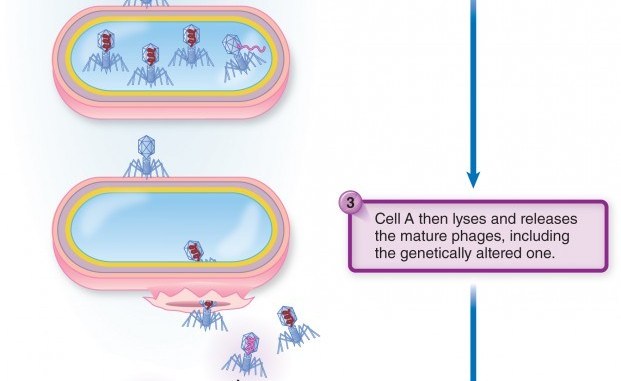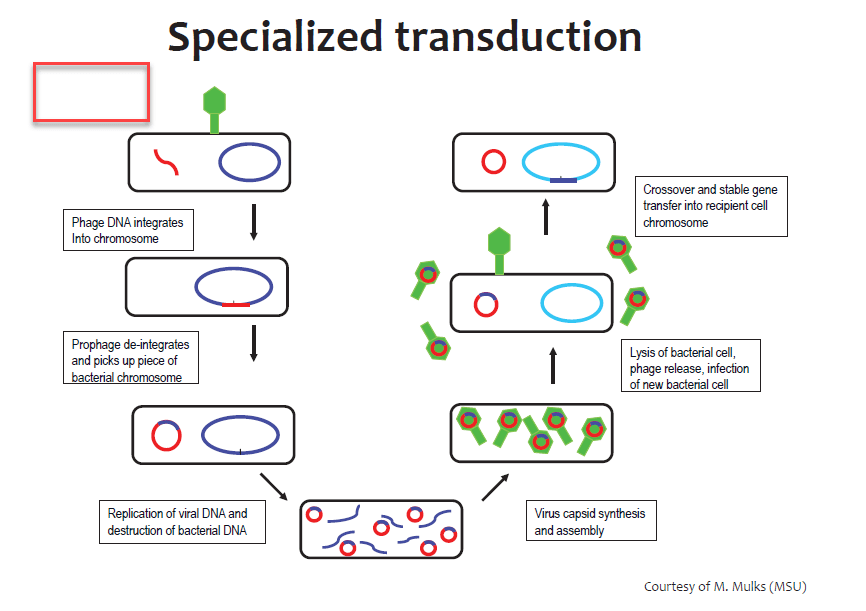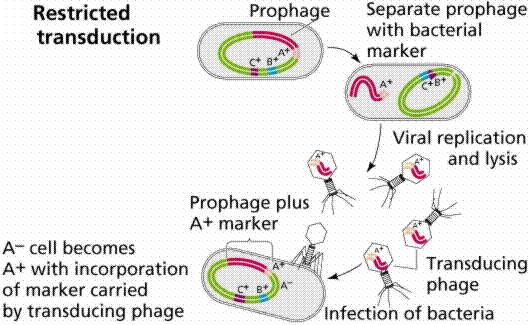Transduction
The process by which bacterial DNA moved from bacteria to another by a virus is called Transduction. In 1952 it was first discovered by Joshua Lederberg. The most striking feature is the transfer of genetic material cell to cell by viruses. The second feature is the fact that only a small part of the total genetic material of anyone bacterial cell is carried by any particular transduction particle.
There are following steps of Transduction
- Bacteriophage (the virus that infects bacteria ) infects a bacterial cell wall. There normal mode of reproduction is to use the DNA replication machinery of the host bacteria cell. Thus this bacteriophage makes numerous copies of their own DNA or RNA. These copies of the bacteriophage DNA or RNA are then packed into newly synthesized copies of bacteriophage virions.
- However, the packaging of bacteriophage Is not fool-proof. Small pieces of bacterial DNA also pack into a bacteriophage virion along with bacteriophage.
- These virions come out on the lysis of the host cell. The mispackaged virions containing bacterial DNA. It can attach to another bacterial cell. They inject the DNA they have packaged. Bacterial DNA transferred from one cell to cell. This DNA can become part of the new bacterium ‘s chromosome.
Types of Transduction
It has three forms:
1. Generalized Transduction:

It occurs in the lytic cycle of the phage virus. DNA of phages virus enters into E.coli bacteria. This DNA replicates and develops many new DNA and capsid. The DNA of bacteria is broken. Some pieces of DNA also enter into the capsid of the virus. bacteria burst and release new phage viruses. Now this phage enters into a recipient and transfers DNA of donor bacteria into the DNA of recipient bacteria. Bacterial endonucleases enzymes destroy the phage virus. Now, these bacteria incorporate genes of donor bacteria and replicate them.
2. Specialized Transduction:

It occurs in the Lysogenic cycle of the phage virus. In this cycle viral DNA incorporated into bacterial DNA as Prophage. It remains peacefully there. But sometimes, it becomes lytic. It comes out of bacterial DNA. Some part of bacterial DNA remains attached to it. Viral DNA with a piece of bacterial DNA replicates itself and start producing new capsids. Bacteria burst. The virus infects other bacteria and transfer genes of donor bacteria to recipient bacteria.
3. Restricted Transduction:

Certain phages perform a more restricted quite Transduction. They carry only a selected section of bacterial genetic material. They Transduction only a few genes. Retroviruses carry out specific or restricted Transduction. These viruses also form tumors (oncogenesis) in animals. It is now known that these viruses exchange a little portion of their genome for a mutant cellular gene. This has a role in gene regulation or replication. These viruses carrying mutant genes to infect the cell. They transform these cells into tumor cells.

